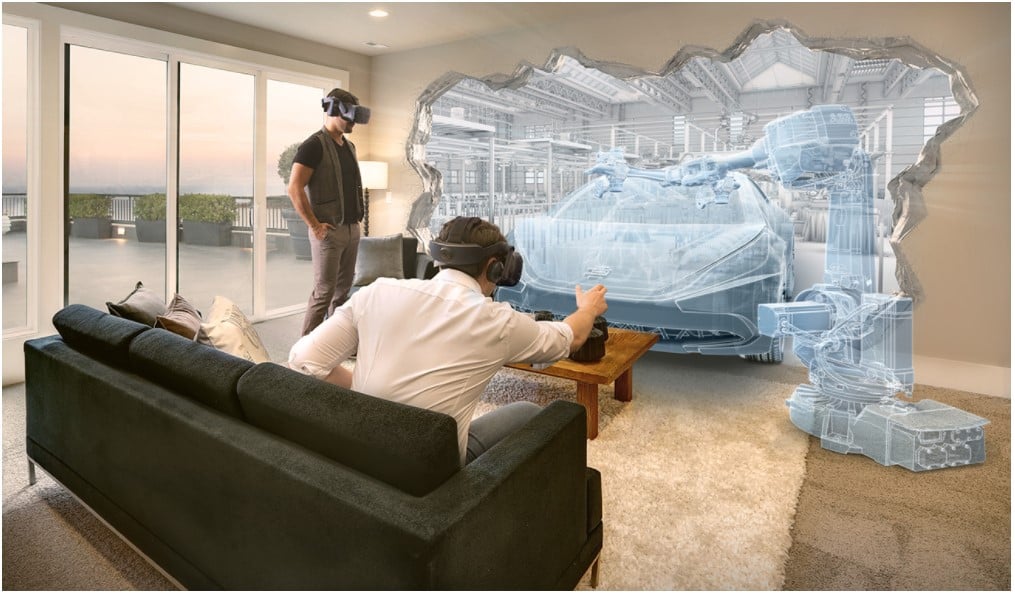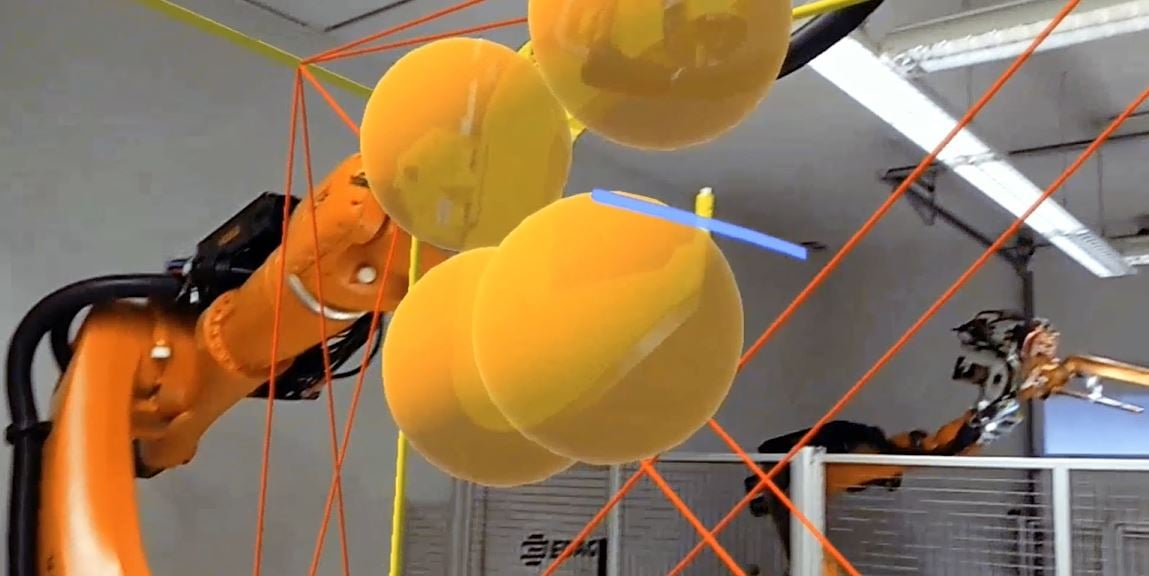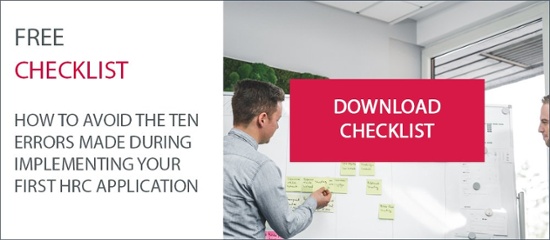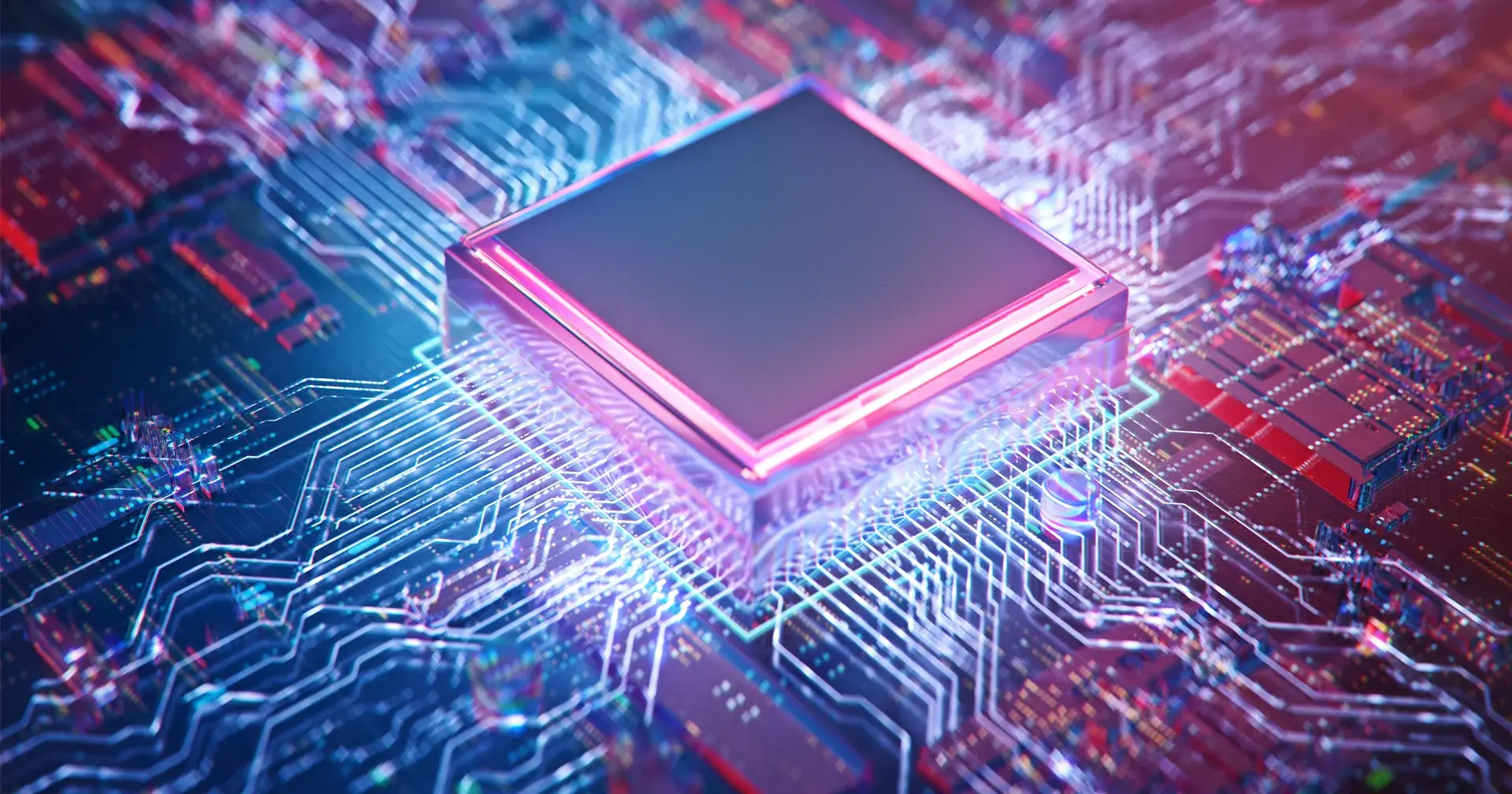In the factory of tomorrow – the smart factory – robots will be your employees' flexible coworkers. Unlike a fixed factory, and depending on programming and tooling, they are able not only to perform predefined work processes, but also to take over a wide variety of different activities. Although robots have the elegance of ballet dancers when they are working, they are in fact absolute powerhouses and need to be precisely orchestrated, to avoid collisions, for instance.
With the framework RoboXR, data stored in the robot controls can be intuitively and visually represented in space using AR technology. Movement paths, for instance, can be efficiently optimised and checked using real-life conditions. In the AR safety zones proof of concept (POC) developed on the basis of FEYNSINN's framework RoboXR, the robot controls' safety cells and work areas are shown in AR. Validation with the department for safety inspections at EDAG Production Solutions resulted in a 35% increase in efficiency compared to the conventional approach.
This example makes it very clear how great the influence of AR technology will be on the production of the future - the smart factory.
Augmented reality – a gimmick becomes future-shaping technology for tomorrow's production.

Just a few years ago, many people were not yet taking augmented and virtual reality seriously. Today, the ascent of XR technologies in corporate practice continues unabated, and is by no means over yet.
EDAG Production Solutions is constantly developing innovative solutions for highly efficient production processes. XR technology enables these solutions to be represented in a way that is both user-friendly and intuitive.
Merging the physical and virtual worlds and combining their data, tools, machines and also robots will be playing an increasingly important role, particularly in the smart factory. In the next two or three years, data glasses will become as much a matter of course in production as safety footwear is today. A technology that was originally belittled now, in its present stage of development, offers added value that can be experienced and measured, and there is currently no end in sight.

For our latest development, which is an AR application - the ROBOXR – AR SAFETY ZONES - we again make use of immersive media, and superimpose digital information over the real world, this time to visualise the safety zones installed in the robot controls. As a result, safety inspections on robot cells can be carried out more intuitively, simply, and therefore efficiently. Safety inspections and the commissioning of robots used to be extremely complex and time-consuming processes.
The commissioning process involves running the robot programs very slowly, so as to be able to foresee and if possible avoid any collisions of the robot with its physical environment, or tearing of hose assemblies. Errors like these can often occur if the data from the offline programming, i.e. the virtual simulation on the computer, does not quite match the real-world conditions.
The framework RoboXR will in the future enable the robot's motion path, for instance, to be virtually projected onto the real-world environment. As a result, situations in which the robot would collide with a hall girder, or where fixtures or workpieces are not positioned as in the offline programming would be immediately obvious, even to a non-specialist.
For the safety inspections, the robot programming is manually checked against on-site conditions using the control panel. To this end, the robot paths must be travelled, in part step by step, and manually measured against on-site conditions with either a laser measuring device or a folding ruler.

Documentation, on the other hand, is produced manually; measurement results cannot be automatically transferred. These are transferred to photos of the real environment later on, at the desk.
By means of AR, for example, safety zones can be virtually superimposed and measured using the actual conditions. If a screenshot function were to be used, this image could then render manual documentation superfluous. The framework RoboXR provides the basic functions for this, making it the ideal basis for the quick, efficient and low-cost development of customer-specific solutions.
Our colleague Chris Huber explains how this works in this video.
Visualisation, documentation, qualification. ROBOXR – AR SAFETY ZONES offers immense advantages and a clear technological competitive edge.
This means that enormous potential has been created by the ROBOXR – AR SAFETY ZONES technology and the visualisation of safety zones in AR. By displaying the complex interrelationships of the robot controls with the HoloLens 2 AR glasses, digital content that is stored can be displayed in the glasses.
Regardless of whether an industrial robot with a safety fence is involved, an HRC robot, or the conversion, retrofitting or optimisation of an existing production plant, the advantages can be transferred to individual applications and make it possible to create both increasingly effective and efficient solutions and a measurable benefit for the customer:
- Clear increase in efficiency during robot commissioning combined with greater flexibility in the planning, commissioning, validation and operation of robots.
- Comprehensive visual and intuitive representation of the safety zones of the entire robot cell and of the robot. This means that even areas which are difficult to access, e.g. in production halls, can be represented and validated.
- Representation in the real-world environment of the safety configurations installed in the robot controls by means of AR.
- Realistic representation of the safety configuration in AR through direct communication between the configurations installed in the physical robot controls and the visual implementation by means of the HoloLens. Planning errors can be avoided. EDAG is pursuing a zero error strategy here, i.e. errors and subsequent damage can be avoided by showing the user complex contexts in an AR environment.
- Realistic safety inspection of the robot cells. Rooms can therefore be kept as small as possible, and tolerance ranges reduced to a minimum.
- Simplified form of record keeping - photographic documentation is taken straight from the AR application. This makes it easier to record and break down the measurement results, and minimises errors in the documentation of the inspection process.
- Employee empowerment: with this technology, we can enable your employees to take on new tasks at a higher technical level without them first having to attend lengthy courses to qualify. An employee who has certain basic skills can – by following the instructions in the glasses – take over new tasks very quickly. Unlike an operating manual in PDF format, the application and the glasses make it possible to see immediately which switch etc. needs to be activated when and how. In this way, we can also generate significant added value in terms of personnel when skilled labour is in short supply.
As experts in visualisation and production solutions for the smart factory, we are proficient in all the tools and methods needed to optimise your various processes. We are happy to offer you advice on your particular requirements. Our colleague Jan Berner, Head of Technology and Process FEYNSINN, will be happy to help with any questions you might have on the range of applications of XR technology and the corresponding, innovative EDAG solutions. Let's join forces and, as partners, make your production even smarter.
Learn from typical HRC project experiences and how to avoid the most important errors with our checklist "Ten errors when implementing the first HRC application":






